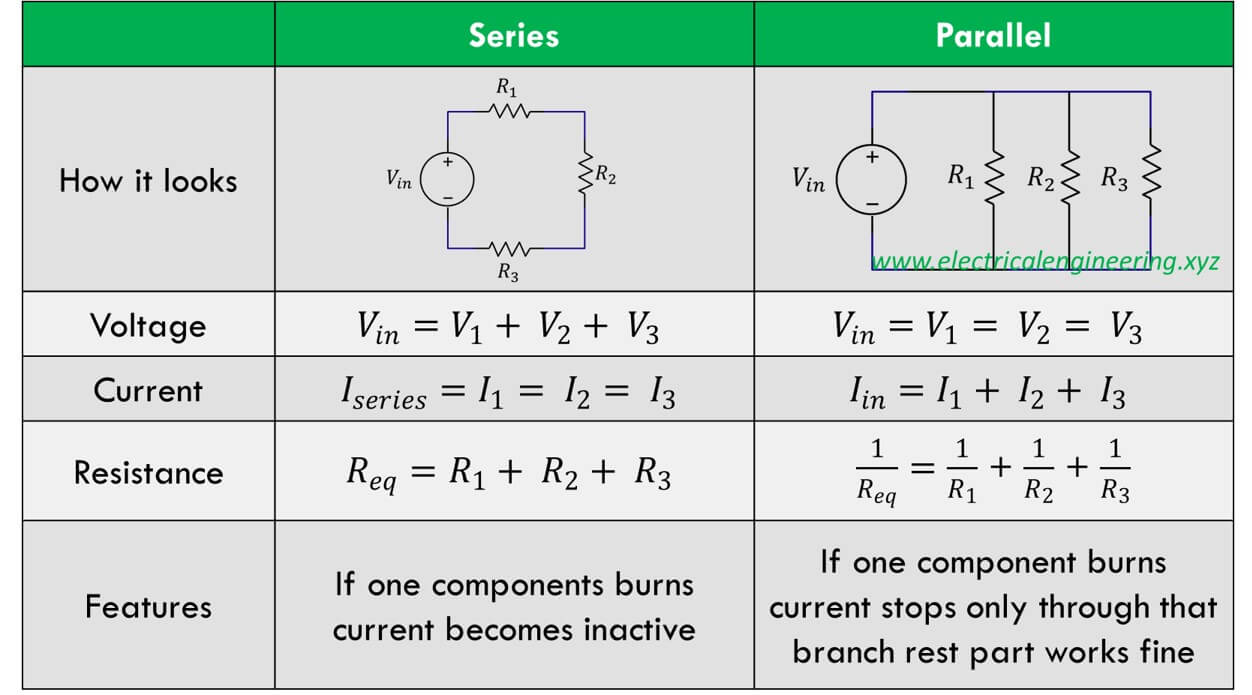

An electric circuit must have at least one source of energy.īased on the manner in which the circuit elements are connected, the electric circuit is classified into following two types −Īn electric circuit in which the circuit elements are connected one after the other (or in cascaded manner) is known as a series circuit. An electric circuit consists various circuit elements such as energy sources, resistors, inductors, capacitors, etc. What is an Electric Circuit?Īn electrical network which has closed path for electric current to flow is known as electric circuit or circuit.

Go through this article to get an overview of how Series and Parallel circuits operate and how they differ from each other. It is important to have a good knowledge of how these circuits work. Start the simulation and see how much voltage is dropped across the LED.Series and Parallel electric circuits are heavily used in various applications such as resistive series circuits, voltage divider circuits, home appliances, etc.Make sure that the multimeter is set to measure voltage by clicking on the “V” button on the multimeter. Connect one leg of the multimeter to one side of the left leg of an LED, and the other end to the right leg of the LED. Add a multimeter by clicking on “+ Components,” clicking on the multimeter, and adding it to your circuit. Let's measure the voltage across any of the LEDs using a multimeter.

Notice how all of the LEDs can be powered in this way – and that we can power many more than just 2! Click "Start Simulation" to test the circuit.When components are arranged in this way, the current from the battery splits into each of these paths, while the voltage across each LEDs is the same. Notice how each LED has one leg that has a path to the negative side of the battery, and another that has a path to the positive side of the battery. In the rightmost circuit, the LEDs are arranged in parallel. Continue to the next step, where we’ll see how we can rearrange the LEDs in a parallel configuration to solve this problem.This is why there is no current flowing through the circuit (0A). If we have two LEDs requiring 2V, that's a total voltage drop of 4V, which is greater than our current 3V battery can supply! Check out the multimeter readings: The voltage from the battery is currently being split across the two LEDs, providing only 1.5V to each, when they require 2V to light up. This is because LEDs have a forward voltage typically around 2V. Notice how with the middle circuit, the LEDs seem to barely turn on.Let’s see what happens when we test out this design. We're also using a new tool called a multimeter that lets us measure current (A), voltage (V), and resistance (R) in a circuit. This configuration is known as a series circuit, where there is a single path for current to flow from the positive side of the battery to the negative side, and thus the amount of current through each component is the same. Your first thought may be to add another LED directly to the circuit, chaining it to an existing LED as shown in the middle circuit. Let’s say we have a circuit with a single LED (as shown in the leftmost circuit in the editor), but we now want to be able to light up more than one light.


 0 kommentar(er)
0 kommentar(er)
